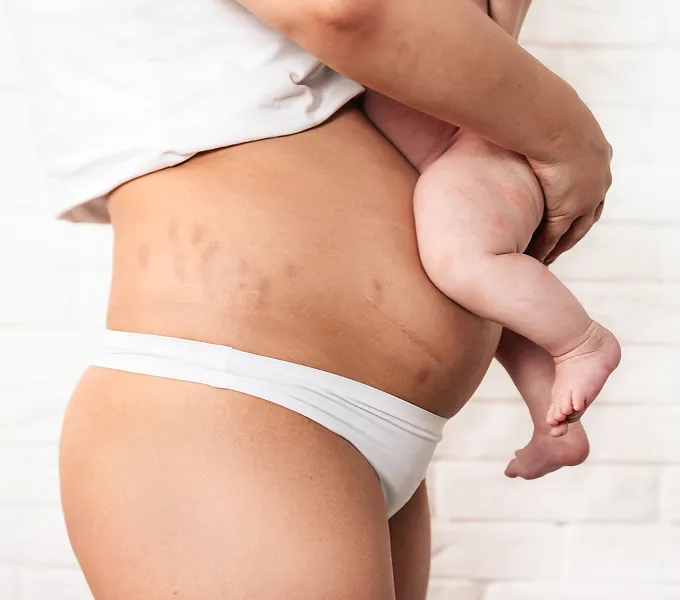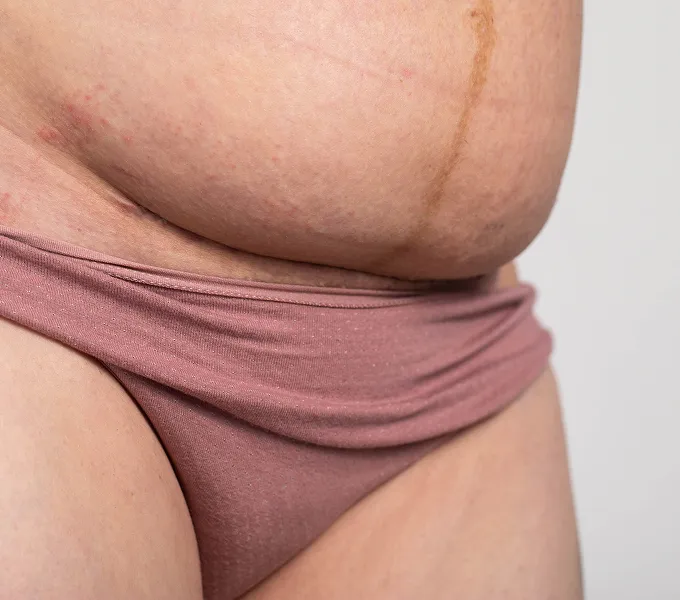
10 Causes of Postpartum Rib Pain and When to Call Your Doctor
Ah, the joys of postpartum life — baby snuggles, diaper changes, and... rib pain? Just when you thought your body was going to take a break from throwing curveballs, along comes postpartum rib pain to give you something else to worry about.
Unfortunately, postpartum rib pain is more common than you might think, and it can range from a mild irritation to a real pain in the... well, ribs. The good news is you don't have to suffer with rib pain postpartum. Because let's face it, you've got enough on your plate without your ribs joining the party.
Keep reading to better understand what could really be going on with your postpartum rib cage. We'll break down 10 possible causes of postpartum rib pain, discuss when to call your doctor, and give you some options for finding relief.
What is postpartum rib pain?
Postpartum rib pain is discomfort or pain felt in the front, back, or sides of your rib cage after giving birth.
Your rib cage, formed by 24 rib bones, protects vital organs, helps you breathe, and supports your upper body. While some rib pain may be related to changes of pregnancy and postpartum and some may still be lingering from pregnancy, it can also stem from unrelated causes.
What causes postpartum rib pain?
Working with a physical therapist who specializes in postpartum care is the best way to determine what's triggering your rib pain. Any of the following causes could be to blame.
1. Costochondritis
This is when the ligaments around the joints of your ribs become inflamed and tender. This can be caused by things like autoimmune conditions (like rheumatoid arthritis), injury (like a blow to your chest), and even pregnancy. Tietze’s syndrome is a similar condition but it typically only impacts your upper ribs.
2. Thoracic (or mid-back) pain
Your thoracic spine connects your neck to your lower back, with each vertebra joining a rib. This area can become stiff and painful postpartum due to changes in chest tissues, increased sitting time, and poor posture while caring for your baby. Hormonal changes during pregnancy and childbirth can also increase muscle and ligament laxity, increasing the chance of pain and discomfort in this area.
3. Rib sprain
There are 98 joints in your rib cage. That’s 98 opportunities for the connective tissue around each joint to become strained, causing pain and trouble during movements. This is especially common during pregnancy and early postpartum, when pregnancy hormones can soften your joints.
4. Muscle strain
In between each rib are intercostal muscles. These muscles help move your ribs while breathing, laughing, and even movement in your middle back. But like any overworked, overused muscle, you can pull an intercostal muscle, causing pain. Other muscles in your upper back and chest — like your pectorals, and upper trapezius muscles — can also strain and cause pain in and around your rib cage.
5. Trapped gas
Trapped gas can happen for all sorts of reasons in the postpartum including shifts in your hormones, weakened abdominals, and cesarean sections. If not able to be relieved, trapped gas can cause sharp, stabbing right sided rib pain postpartum.
6. Heartburn
When stomach acid moves back up into your esophagus, it can cause a burning or discomfort in your upper or middle chest that is worse when lying down. Low stomach acid can also cause heartburn symptoms. Usually, pregnancy-related heartburn will ease up once you are postpartum, but it can also stick around.
7. Organ issues
The left side of your rib cage houses your stomach, heart, spleen, pancreas, and left lung and kidney. Injury, inflammation, or dysfunction in any of these organs may cause left sided rib pain postpartum.
8. Slipped rib syndrome
Slipping rib syndrome occurs when the cartilage connecting your lower ribs to your sternum becomes loose, allowing the ribs to slip in and out of place (subluxation). The joint laxity that is common during pregnancy and in the early postpartum may increase your risk for this condition.
9. Mastitis
This inflammation of breast tissue can cause swelling, pain, and redness in the chest or breast area. Symptoms may include fever and shooting pains that can be felt in the rib area on the affected side.
10. Rib fracture
Pregnancy-associated osteoporosis can lead to weakened bones during pregnancy and the postpartum period. Although it’s rare, this condition can increase your risk of rib fracture and postpartum rib pain.
What is postpartum rib flare?
Postpartum rib flare is when the lower ribs protrude (or flare) outward more than usual. It can be caused by different things, like:
- Your posture: During pregnancy, your growing uterus pushes your internal organs upward into your diaphragm, causing your lower rib cage to expand and tip upward. These changes can stick around postpartum and lead to rib flare.
- Weakened abdominals: As your abdominal muscles stretch to the max during pregnancy, they can be weaker in the postpartum. This can contribute to rib flare as the core muscles are less able to move and support your ribs as usual.
- Breathing changes: Pregnancy can change how you breathe as your growing fetus moves into your diaphragm, causing more lower rib expansion and less abdominal lengthening than usual.
Could postpartum rib flare be causing your pain?
While rib flare itself isn't usually painful, it can impact your mechanics and how you use your muscles. This is what may lead to pain in your ribs or the surrounding muscles during the postpartum.
When should you see your doctor when you have rib pain postpartum?
Luckily lost causes of postpartum are not dangerous, you should contact your obstetrician or primary care provider for further assessment if:
- The pain persists or worsens despite rest, ice/heat, and over-the-counter anti-inflammatory/pain medications
- You experience severe, sudden, or sharp pain
- The pain is accompanied by fever, difficulty breathing, or chest pressure
- You notice swelling, redness, or warmth in the affected area
- The pain interferes with your daily activities or ability to care for your baby
Managing postpartum rib pain: Treatment options and self-care strategies
Treatment options for postpartum rib pain include:
- Rest and gentle stretching exercises
- Ice or heat therapy
- Over-the-counter pain relievers (consult your healthcare provider)
- Physical therapy, including pelvic floor therapy
- Supportive garments or braces
- Treatment of underlying conditions
Pelvic physical therapy can be highly effective for postpartum rib pain. A pelvic PT specializing in prenatal and postpartum can assess your posture, breathing patterns, and rib mobility to develop a personalized treatment plan. This may include manual therapy, exercises for postural strength and mobility, and breathing optimization strategies.
While postpartum rib pain is not usually harmful, reach out to your healthcare provider if you have concerns or if the pain is severe or persistent.
If you're experiencing postpartum rib pain, consider reaching out to the physical therapists at Origin Physical Therapy. They are experts in postpartum care and can help you get to the bottom of your postpartum rib pain.




